Sled hockey has transformed from a niche rehabilitation activity to a thrilling Paralympic sport.
This adaptive version of ice hockey has gained momentum, captivating athletes and spectators alike with its fast-paced action and inspiring displays of skill and determination.
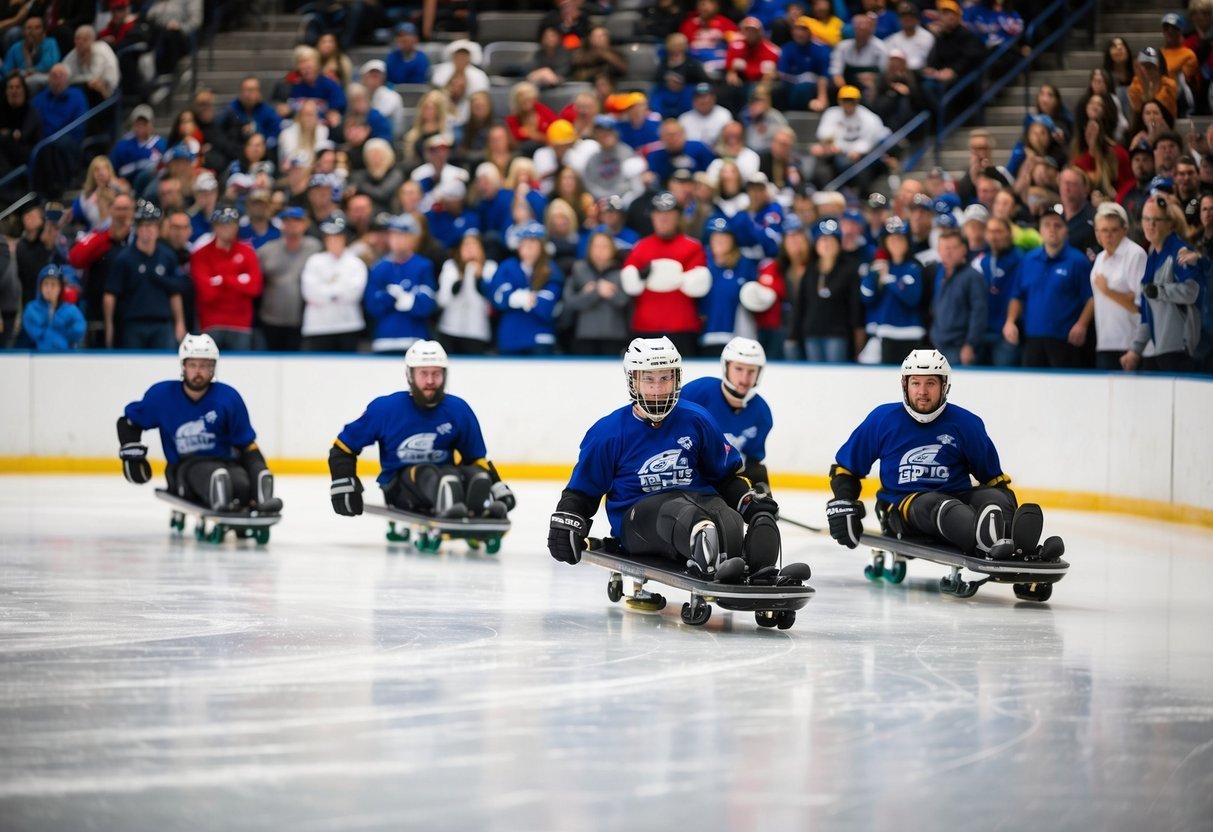
You’ll be amazed by the incredible journey of sled hockey and its impact on the world of adaptive sports. From its humble beginnings in Sweden during the 1960s to its current status as a Paralympic gold medal event, sled hockey has shattered barriers and opened up new possibilities for athletes with physical disabilities.
Get ready to explore seven remarkable aspects that have contributed to the sport’s impressive growth and popularity.
1) Increased global participation
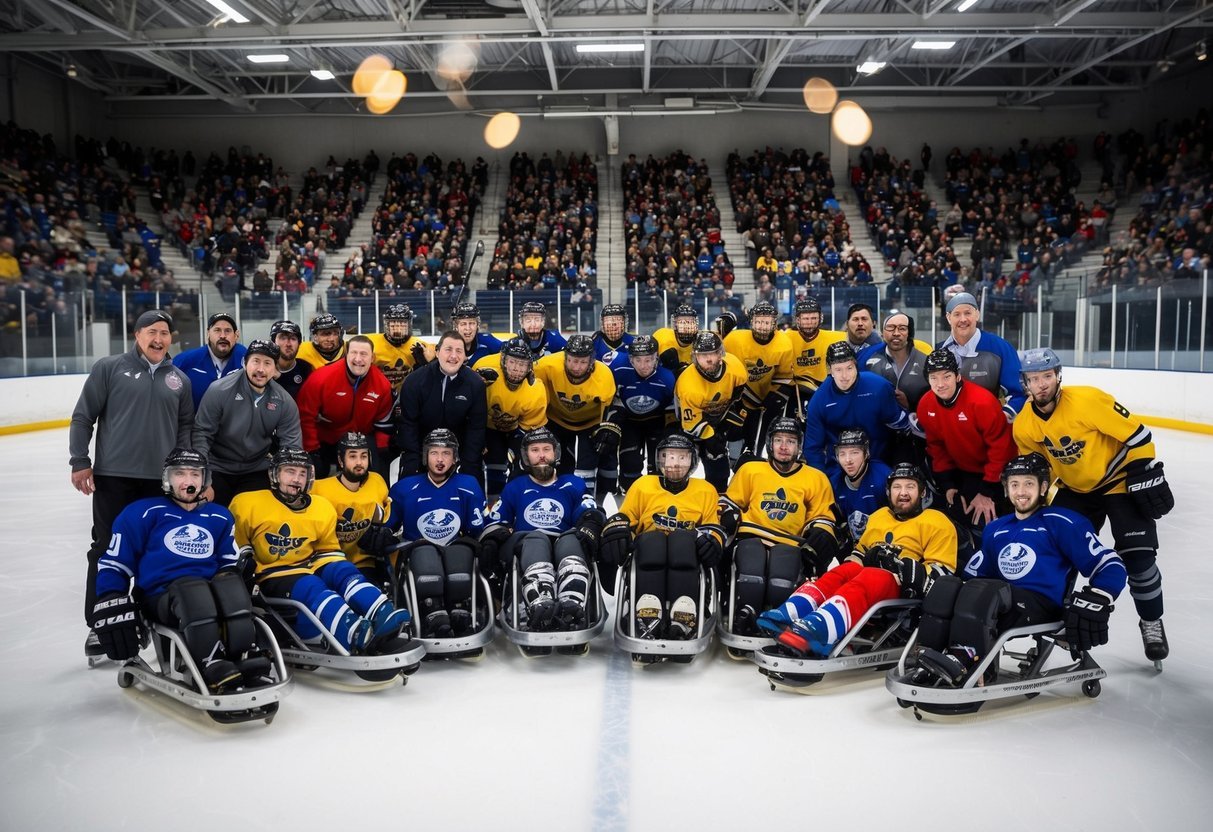
Sled hockey’s popularity has skyrocketed around the world in recent years.
You might be surprised to learn that this thrilling sport isn’t just confined to a few countries anymore.
More nations are embracing sled hockey and forming their own teams.
It’s not uncommon to see squads from unexpected places hitting the ice these days.
The sport has seen impressive growth in the United States, with participation increasing by a whopping 114 percent since 2012.
This surge isn’t limited to North America, though.
European countries have also jumped on the sled hockey bandwagon.
You’ll find teams popping up in places like Sweden, Norway, and Italy.
Even countries with warmer climates are getting in on the action.
Japan and South Korea have developed competitive programs, proving that sled hockey knows no geographical bounds.
This global expansion has led to more international tournaments and friendlies.
You can now catch exciting matchups between teams from different continents, showcasing the sport’s worldwide appeal.
2) Paralympics spotlight
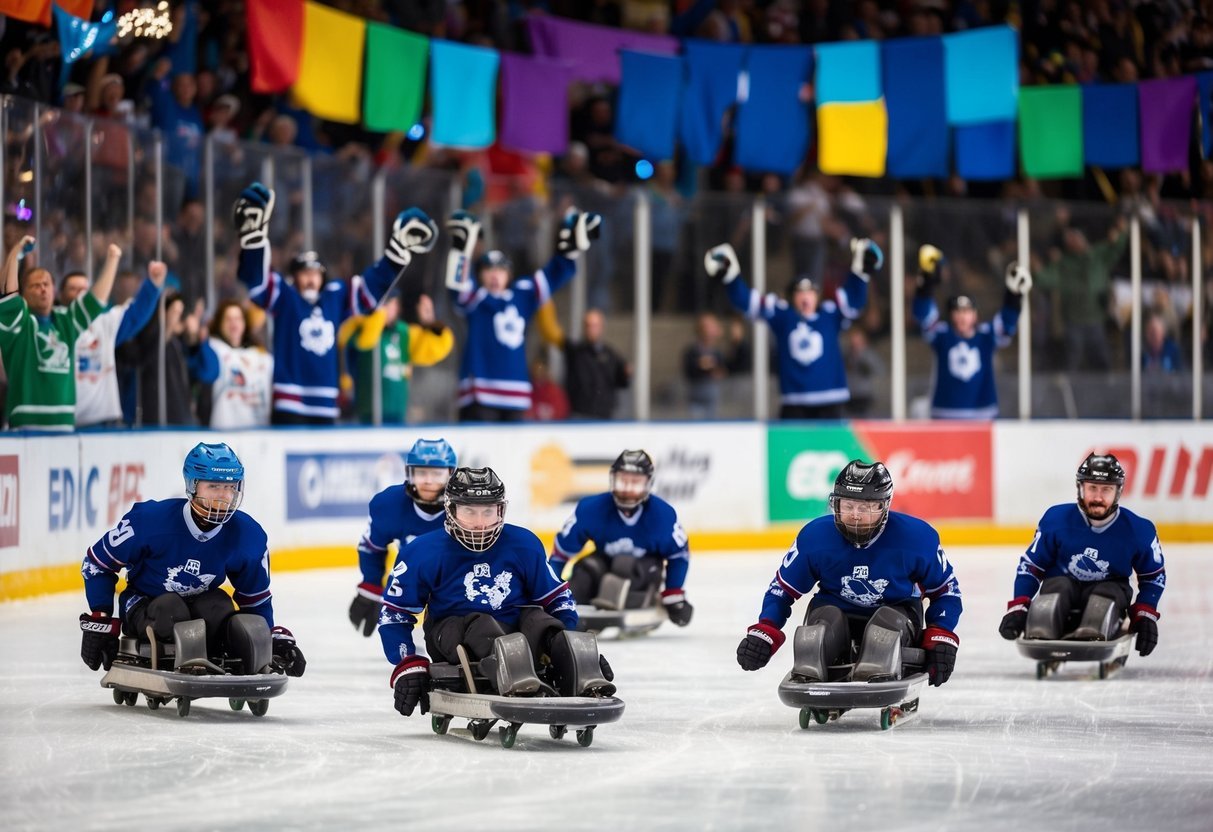
The Paralympic Games have put sled hockey in the global spotlight.
You might’ve caught some epic matches during recent Winter Paralympics broadcasts.
Team USA has been crushing it, winning four straight gold medals from 2010 to 2022.
Their dominance has helped raise the sport’s profile big time.
But it’s not just about the Americans.
Other countries are stepping up their game too.
You’ll see fierce competition from Canada, Russia, and European nations at each Paralympics.
The Games have also sparked interest in women’s sled hockey.
While it’s not a Paralympic event yet, the push for inclusion is gaining momentum.
Paralympic coverage lets you witness the incredible speed and skill of these athletes.
You’ll see bone-crunching hits, laser-like passes, and goals that’ll make your jaw drop.
This exposure is crucial for growing the sport.
It inspires new players to give sled hockey a shot and shows the world just how thrilling adaptive sports can be.
3) Advanced sled technology
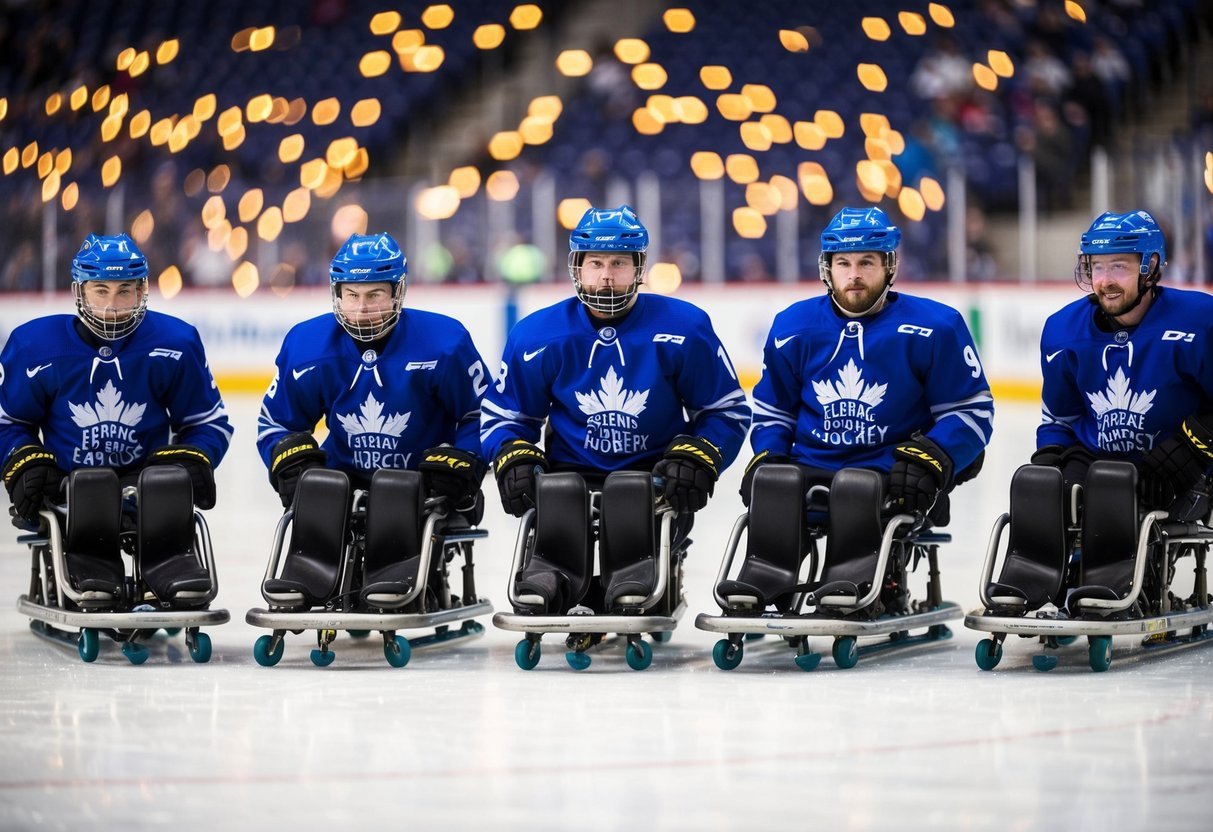
Sled hockey’s growth owes a lot to the amazing progress in equipment design.
You’ll be blown away by how far sleds have come! Modern sleds are lighter, faster, and way more maneuverable than their predecessors.
These sleds are often custom-made to fit each player perfectly.
You get better control and can pull off some seriously cool moves on the ice.
The frames are usually made from super-strong but lightweight materials like aluminum or titanium.
The bucket seat is another game-changer.
It’s designed to keep you snug and secure while you zip around the rink.
Some even have adjustable backrests for extra comfort and support.
Check out the blades on these bad boys! They’re sharper and more precisely angled for killer turns and stops.
You can customize your sled to match your playing style and physical needs.
Advanced sleds also come with nifty features like shock absorbers to smooth out those bumps on the ice.
You’ll feel like you’re floating as you glide across the rink.
With tech like this, it’s no wonder sled hockey is taking off!
4) Youth programs expansion

Sled hockey’s popularity among young athletes has skyrocketed in recent years.
You’ll find more opportunities than ever for kids to get involved in this thrilling sport.
USA Hockey now supports developmental teams for both boys and girls, opening doors for young players to hone their skills.
This commitment to youth development is crucial for the sport’s long-term growth.
Local programs are popping up all over, giving kids easy access to try sled hockey.
You’ll see new sled hockey programs launching in cities across the country, from Moorhead to Rochester.
These youth programs aren’t just about competition.
They focus on building confidence, teamwork, and athletic skills.
You’ll watch young players grow both on and off the ice.
Tournaments like the Sled Classic welcome youth players, giving them a taste of high-level competition.
It’s an awesome chance for kids to showcase their skills and meet other young sled hockey enthusiasts.
As more kids discover the thrill of sled hockey, you can expect to see even more youth programs emerge.
It’s an exciting time for young athletes looking to dive into this cool sport.
5) Improved accessibility
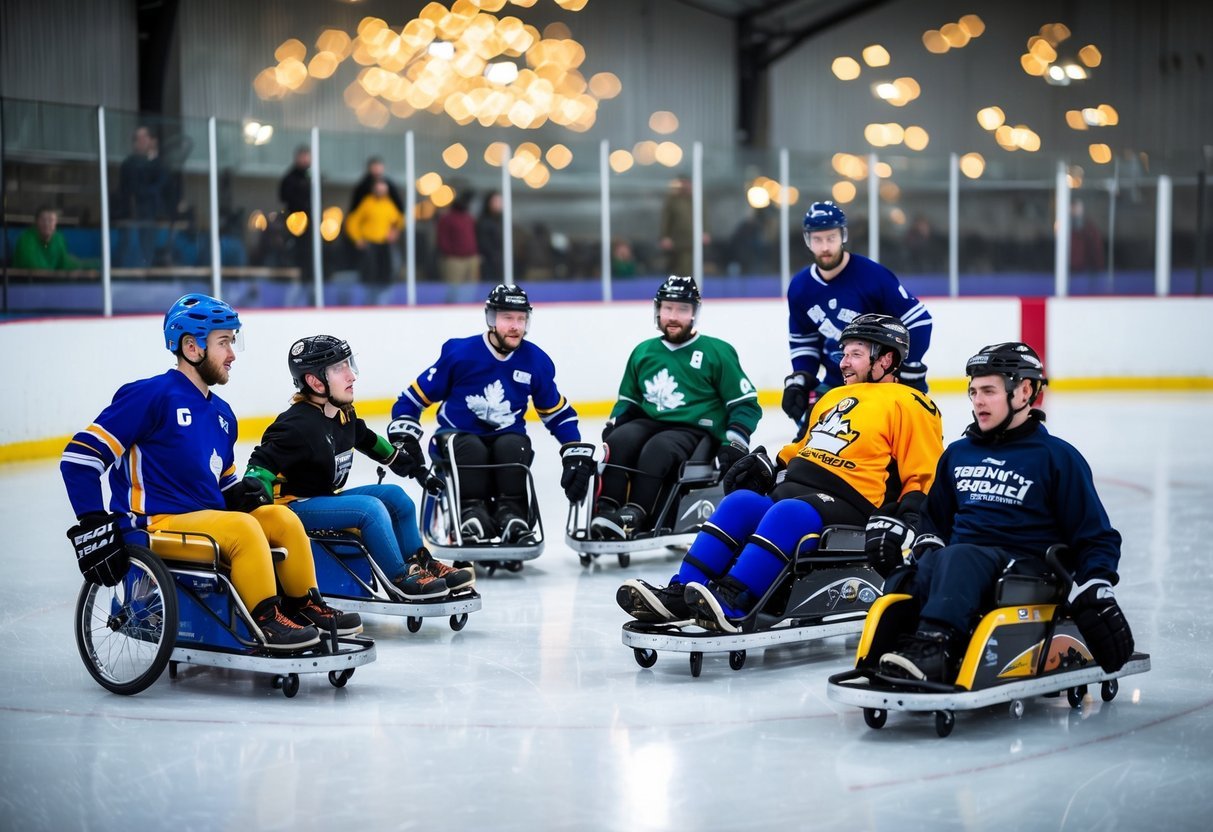
Sled hockey has come a long way in making the sport more accessible to athletes with disabilities.
You’ll find that specialized equipment has played a huge role in this progress.
Sled hockey sleds have been redesigned to be more comfortable and maneuverable.
This allows players with various physical limitations to participate fully in the game.
Adaptive rinks are popping up in more locations, giving you more opportunities to try out this exciting sport.
Many facilities now have proper access ramps and wider doorways to accommodate sleds.
You’ll be pleased to know that sled hockey programs are expanding across the country.
Organizations like the Coyotes Sled Hockey team are providing more chances for disabled athletes to get involved.
Training resources have also improved.
You can now find specialized coaches and clinics designed specifically for sled hockey players.
These resources help you develop your skills and technique more effectively.
With all these improvements, sled hockey is becoming a more inclusive and accessible sport for everyone.
You’ll find it easier than ever to get involved and experience the thrill of this fast-paced game on ice.
6) International tournaments
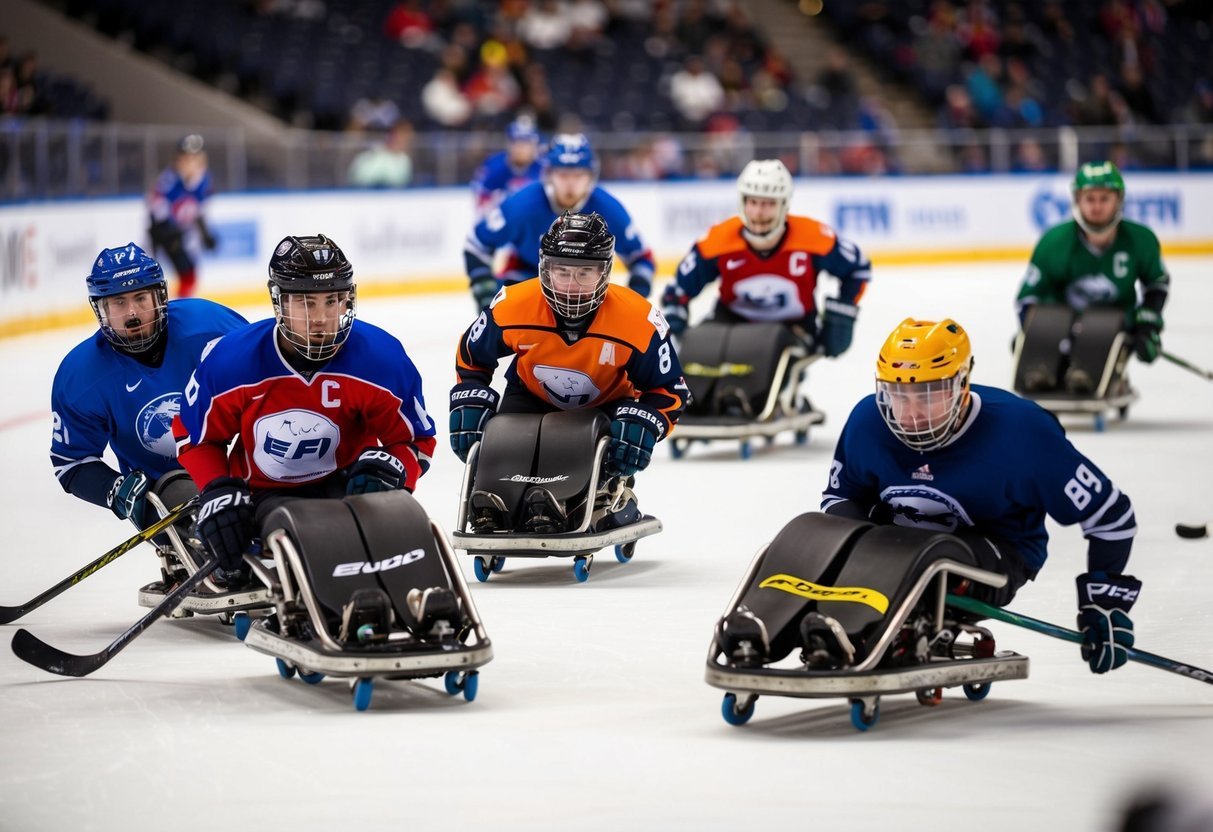
Sled hockey’s global reach has expanded significantly, with international tournaments drawing teams from around the world.
You’ll find competitions popping up in unexpected places, showcasing the sport’s growing popularity.
These events aren’t just about winning medals.
They’re creating opportunities for you to witness incredible athleticism and connect with players from different cultures.
The Paralympic Winter Games remain the pinnacle of sled hockey competition.
But don’t overlook other exciting tournaments that are gaining traction.
You might want to check out the International Para Hockey Cup or the Sled Hockey World Championships.
These events attract top-tier talent and offer thrilling matchups.
As more countries embrace sled hockey, you’ll see an increase in the number and quality of international tournaments.
It’s an exciting time to be a fan or player in this rapidly evolving sport.
7) Celebrity endorsements
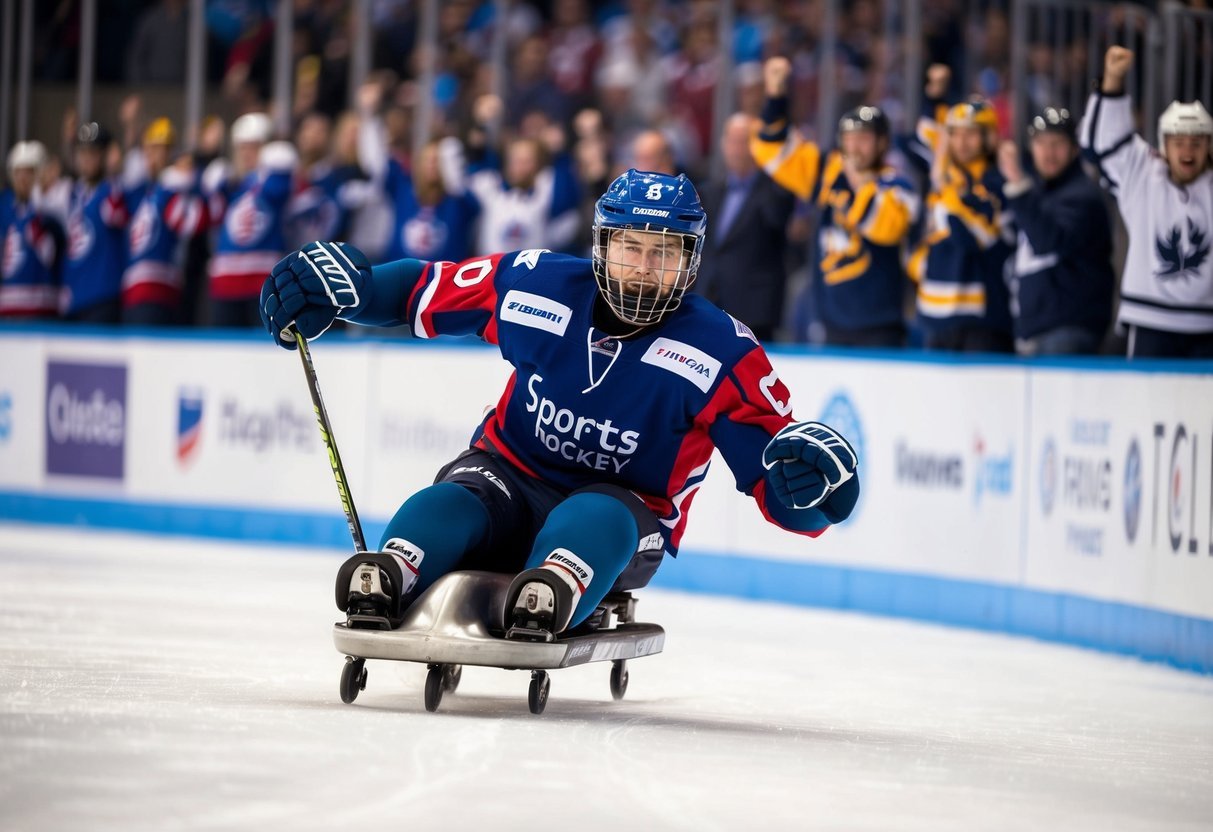
Celebrity endorsements have given sled hockey a major boost in recent years.
You’ve probably noticed more famous faces promoting this thrilling adaptive sport.
NHL stars have been especially influential in raising sled hockey’s profile.
When pro hockey players try out sled hockey and share their experiences, it piques fans’ curiosity.
Paralympic gold medalists have also become celebrities in their own right.
Their inspirational stories and athletic feats draw attention to sled hockey’s competitive side.
Some movie and TV stars have gotten involved too.
When they post about sled hockey on social media, it reaches millions of potential new fans and players.
These endorsements help break down stigmas around adaptive sports.
They show that sled hockey is just as exciting and challenging as any other extreme sport.
Celebrity support also attracts more sponsors and funding to sled hockey programs.
This allows the sport to expand and improve equipment and facilities.
You might even see sled hockey featured in commercials or TV shows soon.
As more celebs get on board, the sport’s visibility will only continue to grow.
History of Sled Hockey
Sled hockey has come a long way since its inception.
Its journey from a rehabilitation activity to a Paralympic sport showcases the determination and passion of athletes with physical disabilities.
Origin and Early Days
Sled hockey’s roots trace back to the 1960s in Sweden.
It all started when a group of guys with physical disabilities wanted to keep playing hockey.
They came up with the idea of sitting on sleds with skate blades, using shortened hockey sticks with metal picks to propel themselves across the ice.
The first organized match took place in Stockholm in 1961.
From there, the sport quickly gained traction.
By the late 1960s, teams were popping up in other countries like Norway and Great Britain.
Key Milestones in Growth
Sled hockey hit some major milestones as it grew.
In 1994, it made its debut as a demonstration sport at the Lillehammer Paralympic Games.
This was a huge deal for the sport’s visibility.
Four years later, sled hockey became an official Paralympic sport at the 1998 Nagano Games.
This recognition really kicked things into high gear.
More countries started forming national teams and leagues.
The sport’s popularity exploded in North America in the early 2000s.
The USA and Canada became powerhouses, with intense rivalries developing.
Today, sled hockey is a fast-paced, thrilling sport that’s captivating audiences worldwide.
Impact on Communities
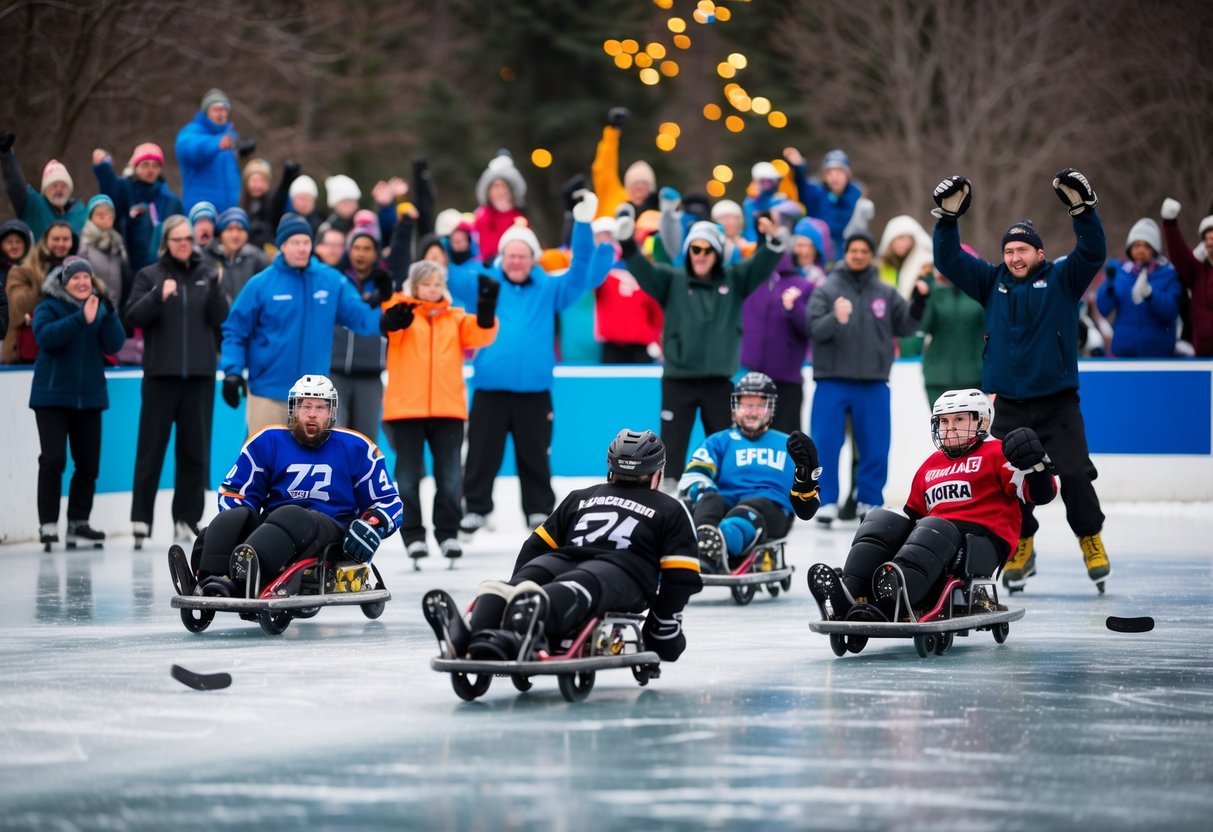
Sled hockey has transformed local communities in remarkable ways.
Its influence extends far beyond the ice rink, fostering a more inclusive society and bringing people together through the love of sport.
Inclusivity and Accessibility
Sled hockey breaks down barriers, making ice sports accessible to everyone.
Sled hockey also encourages individuals to form connections regardless of physical abilities.
Rinks across the country are adapting to accommodate sled hockey.
They install special boards and make entrances wheelchair-friendly.
Community programs are popping up everywhere, offering try-it sessions and beginner leagues.
You can often borrow equipment, making it easy to give the sport a shot without a big investment.
This openness has led to diverse teams with players of all ages and backgrounds sharing the ice.
Social and Cultural Benefits
When you get involved in sled hockey, you’re joining more than just a team – you’re becoming part of a tight-knit community.
The sport fosters camaraderie and mutual support among players, families, and volunteers.
Local tournaments and events bring people together, creating a buzz in the community.
You’ll see how these gatherings boost local businesses and raise awareness about adaptive sports.
Sled hockey also provides a platform for challenging stereotypes about disability, showcasing the incredible athleticism and skill of its players.
The sport’s growth has led to increased media coverage, further normalizing the presence of adaptive athletes in mainstream sports discussions.
This visibility inspires others and promotes a more inclusive sports culture in your community.
Frequently Asked Questions
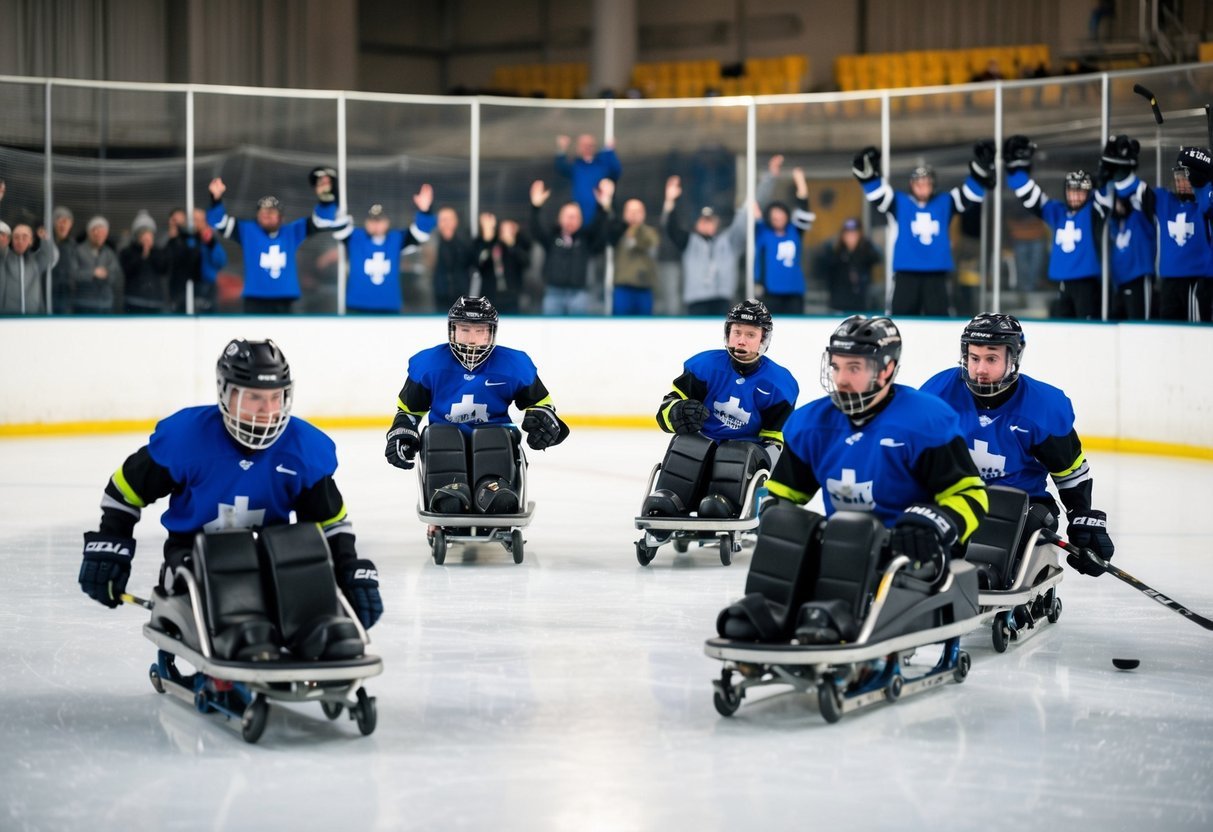
Sled hockey has seen tremendous growth, with more people getting involved and better equipment becoming available.
Let’s dive into some common questions about this exciting sport.
What gear do I need to get started with sled hockey?
To hit the ice, you’ll need a sled, two sticks, and standard hockey protective gear.
The sled is specially designed with blades underneath and a bucket seat.
Your helmet, gloves, and pads are similar to regular hockey gear.
Can you break down the main rules of sled hockey for a rookie?
Sled hockey follows most of the same rules as ice hockey.
You use your sticks to propel yourself and handle the puck.
Checking is allowed, but you can’t use your sled to hit opponents.
Games are typically three 15-minute periods.
Where’s a cool spot to play sled hockey nearby?
Check out local ice rinks or adaptive sports programs in your area.
Many cities now have sled hockey leagues for all ages and skill levels.
Your nearest Paralympic Sport Club might also offer sled hockey.
What makes sled hockey sticks unique from standard hockey sticks?
Sled hockey sticks are shorter and have metal picks on one end for pushing across the ice.
The other end is curved like a regular hockey stick for puck handling and shooting.
You’ll use two sticks instead of one.
How’s sled hockey been changing the game for athletes with disabilities?
Sled hockey has opened up a whole new world for athletes with physical disabilities.
It’s become one of the most popular Paralympic winter sports, giving players a chance to compete at elite levels and represent their countries.
Where can I score a sled hockey sled without breaking the bank?
Look for used equipment through local adaptive sports programs or online marketplaces.
Some organizations offer equipment loans or rentals.
You can also check with manufacturers for demo models or last season’s inventory at discounted prices.


